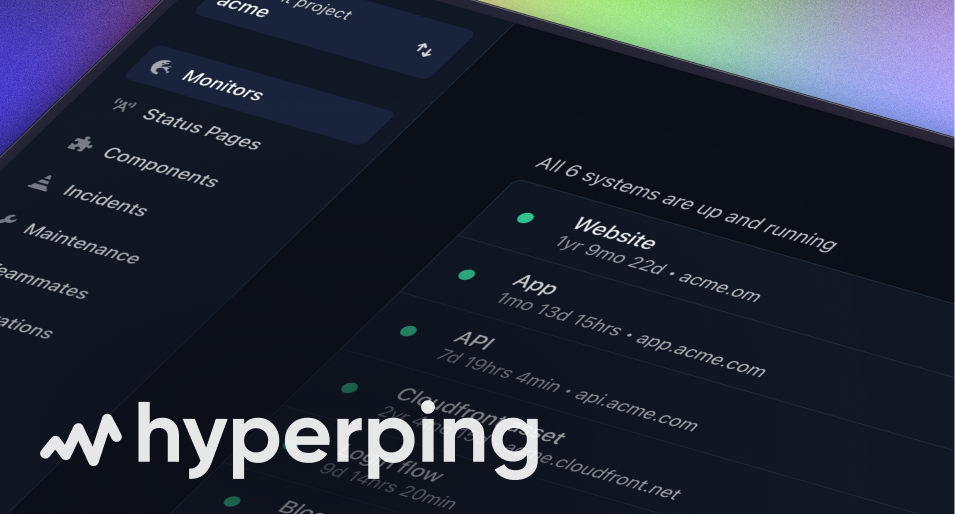Websites are the economic engine for modern businesses and service providers. A user-friendly, always-on, secure site reassures visitors and shows customers, business partners and others you are serious about your business.
As CTO, DevOps manager, or IT lead, you need a digital experience monitoring (DEM) strategy to prevent or minimize website or API downtime. Let's look at the essential components of effective digital asset monitoring and the tools available to reduce risk and keep your business or organization online.
Potential Costs of Downtime to Your Business
There are two critical reasons system failures and downtime matter to your business – the direct costs of being off-line and the indirect impact on your business:
Direct costs include lost revenue, lost customers, employee and systems recovery costs, negative impact on search engine ranking, potential lawsuits or legal fees, and more. Research by Gremlin estimates Amazon, for example, could lose more than $220,000 in revenue for every minute of downtime.
The indirect but potentially even more significant damages are government intervention or regulation, losing your competitive advantage, and long-lasting negative reputation impact.
Your job as developers and IT professionals is to minimize the potential for incident failure, develop a digital monitoring strategy, and maximize your team's ability to get your business or digital assets back online as soon as possible.
What's in a Top-Notch Monitoring Strategy
Your DEM plan should be designed to monitor potential problems and provide your IT team or developers with instant alerts so engineers can quickly implement solutions.
Here are the five critical components in a well-designed digital monitoring plan:
- Incident monitoring tracks the active status of your website or APIs by checking URLs, error logs, browsers, and other components as frequently as every minute.
- On-call scheduling ensures at least one team member is available 24 x 7 to respond to incidents and manage the overall response.
- IT alerts automatically send incident reports to the right person at the right time using SMS, phone calls, or other preferred channels as designed in your strategy.
- Incident communication requires detailed planning for internal and external message channels. A dedicated status page can instantly communicate service availability, the expected timing for the return of service, and other essential updates.
- Incident response involves the team's overall problem-solving, restoring services or digital assets, and a thorough post-incident review and assessment.
Incident Monitoring Best Practices
It's valuable to review incident monitoring best practices to help you plan your digital monitoring strategy.
Incident Monitoring
Alerts depend on the quality and setup of your monitoring tools. When creating your monitor, focus on the type of incident verification, the frequency and timing for checking digital assets, and the most practical alert thresholds.
On-Call Strategies
Design your on-call plan around your organization, including key locations, team size and expertise, and practical scheduling to meet service expectations. Create on-call rotations, explore the impact of different time zones, and ensure escalation policies put the right people in the right place at the right time.
Alert Best Practices
Alerts must use the best available and most reliable secure channels. Options include SMS, phone calls, emails, Slack or other instant messaging apps or channels, and other online team tools such as Microsoft Teams. In addition, alerts need to respond to different priority messages for various incident severity. Finally, warnings must be actionable and include vital data required for diagnosis and quick solutions.
Clear Incident Communications
Clear, quick communication can minimize damage from incidents. A dedicated, effective status page provides the fastest service updates to employees, customers, and subscribers to the update page. Social media adds extra frequency and reach for critical communications and updates.
Incident Response Best Practices
Automating manual tasks and diagnoses leads to faster response and quicker incident resolutions. Centralizing monitoring, data, logs, and information gathering, communications, and incident management ensures
KPIs to Measure Success
The two most important measurements of your DEM strategy and incident management success are Mean Time to Acknowledge (MTTA) and Mean Time to Respond (MTTR).
MTTA is the time it took your team to acknowledge the incident from the moment the incident alert was triggered. Make sure to monitor "alert fatigue" where your IT team receives too many warnings, the wrong type of alerts, or a decline in the quality of incident acknowledgment. To calculate your MTTA, divide the number of incidents by the average response time, and you have a valuable metric in monitoring your incident response.
MTTR measures the overall time to recover from a service or system failure. The mean time to recovery tells your IT team and management how quickly the company solved the problem and restored essential business services or digital assets.
You may also want to calculate other important KPIs such as the mean time to respond, mean time to repair, or the mean time to resolve. In addition, the mean time between failures (MTBF) provides CTOs and IT engineers with a longer-term view of incident management. Each KPI offers a slightly different but valuable measure of effective incident response.
These key performance indicators provide a valuable guide for your future planning, digital experience monitoring, and overall effectiveness of your company's incident response. In addition, they create benchmarks for performance improvement when it comes to incident management.
Improving Your MTTR
Following are several ways to improve your mean time to recovery:
- use faster monitors and higher frequency
- improve alerts and eliminate alert fatigue
- automate on-call management
- do frequent incident) analysis
- continuously update and improve your digital experience monitoring plan.
Can you afford not to Monitor?
Your job as developers and IT professionals is to minimize the potential for incident failure, develop a digital monitoring strategy, and maximize your team's ability to get your business or digital assets back online as soon as possible. The critical question you need to ask is can you afford not to monitor the digital experience of your business?
Ask us how to combine reliable uptime monitoring, instant alerts, hosted status pages, and incident management for your IT team or try our free, 15-day trial.




